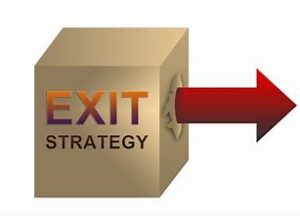
Employee Stock Ownership Plans Esop An Exit Strategy Maybe
Posted on March 11, 2020 by Tom Azzarelli
 ESOP’s may be used as a means to allow shareholders with management responsibilities in a closely held company to gradually sell and ease out of the business (exit strategy) over a number of years and reward employees with a benefit tied to corporate performance (i.e. – stock value increases).
ESOP’s may be used as a means to allow shareholders with management responsibilities in a closely held company to gradually sell and ease out of the business (exit strategy) over a number of years and reward employees with a benefit tied to corporate performance (i.e. – stock value increases).
Implementing and administering ESOP’s are very complex and can wreak havoc if not properly structured. ESOP’s are not for the faint of heart and before pursuing down this road owner(s) should clearly understand the benefits and pitfalls of an ESOP and look at other alternatives carefully. ESOP’s are qualified (i.e. tax qualified) defined contribution employee benefit plans that primarily invest in the stock of the employer. If a company performs poorly the value of its stock falls and so does the employee’s retirement account value. There are DOL, IRS and fiduciary rules that MUST be adhered to throughout the entire lifecycle of the ESOP that can be onerous to the owners especially if the ESOP fails or cannot be sustained. ESOP’s can be costly to form and maintain!
ESOP’s are not for companies that are volatile or subject to major swings in profits. Commodity product companies typically are not good candidates. Employer contributions are usually required annually, and if not paid the ESOP Trust may fall into default on its obligation to the company unless provisions provide otherwise. Finally, ESOP’s almost always leverage the company (leveraged buyout). That’s just one more thing to worry about with bankers. There are also the GAAP accounting rules which are confusing at best.
However, a properly structured ESOP has many benefits for owners wishing to exit the business and for employees committed to staying on for the long haul. ESOP’s allow the selling shareholder to sell stock to the employees via an ESOP Trust. In the simplest of terms, the ESOP Trust is obligated to pay the selling shareholder for the value of the stock sold to the ESOP Trust, which holds the stock for employees until employees retire and cash out. Employees vest in their account overtime. Therefore they must stay with the company to benefit. This is one of the main selling points of an ESOP, employee retention. The proceeds of the stock sold by the selling shareholder usually is tax deferred (section 1042), essentially indefinitely as long as certain IRS rules are adhered to.
The company is allowed to deduct dividends paid and any contributions (required) made into the plan providing a nice tax shelter. The tax savings may be sufficient to payout the selling shareholder over time.
Determining whether an ESOP is right for your company requires careful investigation by experienced ESOP and accounting professionals. Setting up an ESOP may take from three to nine months and can be costly.
If you need assistance with ESOP’s or finding qualified ESOP professionals please contact me at 480.403.1483

